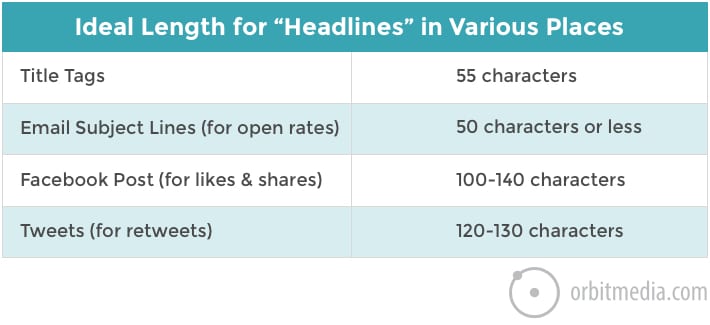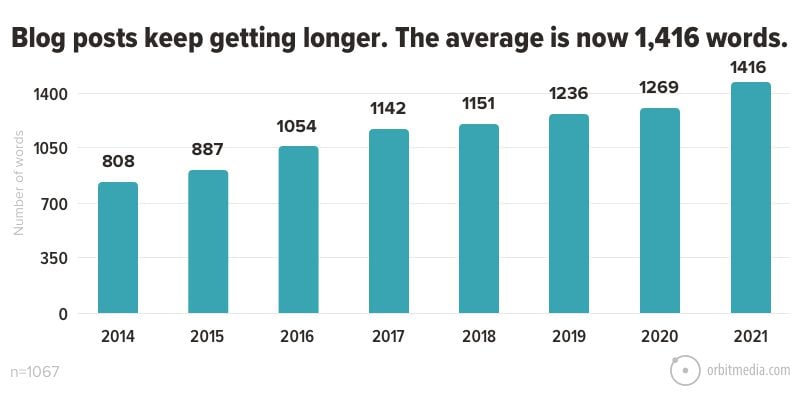These are the keys to success in content marketing. Since virtually every content marketing program involves a blog, it’s worth taking the time to create (or borrow) the one document that makes all future planning and collaboration a bit easier: editorial guidelines.
Guidelines ensure your posts are consistent in style and tone, cut down editing time and lead to higher quality content overall. All important ingredients for growing readership, reputation and lead generation start from your blog.
Editorial guidelines have always included standards for style and grammar. But since these guidelines are for a blog, we need to include some elements specific to digital, like keyphrases and images. It’s similar to a content checklist, but it’s more formal and used by marketing teams.
Here’s a list of nine things to include in the guidelines for your blog.
1. Blog and content objectives
State your goals right off the bat. Start your blog editorial guidelines with the content objectives of your blog.
- Do you want more traffic?
- Looking to rank for specific keyphrases?
- Grow your email list?
- Build your relevance in the community?
Whatever the goal, communicating it with your writers will keep them focused on the end result.
2. Approved topics
Before you can start writing, you need to know what you’re writing about. Obvious, right?
Let your writers and contributors know exactly what type of topics they should be pitching or if topics will be provided for them. If you’re getting pitches from writers on topics that don’t fit your blog goals, add guidelines about what your blog doesn’t cover.
ProTip! A fast way to align your topics with the interests of your readers is to write a quick content marketing mission statement.

3. Headlines
Headlines are your blog post’s first impression. They affect search rankings, email open rates and social sharing. Good headlines drive traffic. Bad headlines …you’re hearing crickets.
Provide a few samples of the types of headlines you’re looking for—the less guesswork the better. Examples can be from your own blog or from awesome content you’ve read elsewhere.
 |
“Assume your audience isn’t interested. Place the story’s most interesting word or phrase as close as possible to the start of the headline. This becomes even more crucial as people read on their smartphones, where email subject lines can get truncated to 3 or 4 words.” – Charlie Meyerson, Meyerson Strategy (and digital news media veteran of 16 years) |
Define your standards for headlines with these questions:
- How long should the headlines be?

- Do you expect your writers to submit one headline or suggest several?
- How should the headlines be formatted? Can they include questions and numbers?
4. Voice and tone
Voice and tone guidelines create a benchmark for writers. Consistency is key. Tiny details like punctuation, grammar and word choice will be noticed, especially by your loyal readers.
Voice:
What does your brand sound like? Is it playful and cheeky or honest and straightforward? In our guidelines we state:
Posts on the Orbit website are helpful, not self-promotional. No jargon or corporate speak. Keep it interesting and conversational.
Tone:
How do writers use language to convey mood and connect with different audiences across different channels? Blog posts, social media and email all have different audiences who respond to different tones.
Style:
- When should capitals be used? Title Case? Or sentence case?
- How should certain words be spelled? call to action or call-to-action?
- Approved industry jargon
- Emojis and GIFs
- Words to never use
- Grammar and vocabulary
5. Keyphrases
Style and tone aside, when possible, align your blog post with a keyphrase that your audience is searching for. Recommend a preferred keyword research tool and choose a few keyword phrases that you have a shot of ranking for.

Your blog’s editorial guidelines should show how and where to indicate relevance: titles, headlines, subheaders or body text. They should flow into the copy naturally. Don’t overdo it. If you wouldn’t say it in a conversation with one of your readers, it’s probably safe to assume you shouldn’t include it in your post.
6. Formatting and structure
Teaching proper formatting is another way to save time during the revision process. Just like style and tone, formatting and structure require consistency. Writers should have the answers to questions like:
- Where and how are headers and subheaders used?
- When is it ok to use italics, bold or strikethrough?
- What are your title and sentence case capitalization rules?
- Should lists be numbered or bulleted?
- What types of links are allowed to be included?
Simple formatting tips like, “use headers to break up large blocks of text” or “paragraphs should be no longer than four sentences” help lay the foundation too.
7. Guidelines for length
Blog post length varies depending on the objective of your post. The length of the average post is just over 1400 words. If your goal is to teach your readers something (think guides and how to’s) and you’re hoping to rank well, your suggested word count can range upwards of 1400+ words.

Experiment with different post lengths and see what inspires the most engagement from your readers. Once that’s determined, specify a minimum word count for your writers.
This doesn’t have to be a one size fits all number either. If your blog features a variety of content, set a minimum word count for each type of post.
8. Blog images
Your guidelines will set the standards for blog images. Here are few things to consider when it comes to images.
- Do you have standards for colors and use of text? Set the standard with examples of images best suited for your blog.
- Do you use multiple images per post? Let writers know how many images should be included with a minimum and/or maximum.
- What kinds of images do you prefer and allow? Charts? Animated GIFs? Infographics?
- Do you use stock photos? If you have a stock photo account, provide the login information or provide the links to the creative commons you prefer to use for photos if not.
If you require writers to source images for their content, you’ll need to get specific. Give credit where due. Don’t forget to let writers know how to properly source their images.
Speaking of giving credit…
9. Links and attribution
Links and attribution are a big part of a blog’s editorial guidelines. Especially if you work with outside contributors.
- Internal links
Remind writers to always link to related content that’s already on your blog when possible. And because great content requires research, include the proper citing guidelines for any external resources or statistics. - External links and citations
When and how to credit sources and research should be part of your guidelines. Also, when it’s ok to link to a contributors external content. - Forbidden links
A brief summary of the type of links that are discouraged is helpful too. Links to direct competitors, self-promotion and affiliate links are good examples
Watch out for link spammers. Always check the sources being used by contributors to see if it’s appropriate content for your audience. For even more clarity, list a few approved sites writers can link to.
Don’t wait to get started
Start your blog by setting basic guidelines then add in new editorial requirements as your blog evolves. There’s no need to write up a 10-page editorial guideline, but you should at least have the basics in place if you want your writers to deliver content that meets and exceeds your blog standards.
Content marketing collaboration is a huge shortcut and a powerful way to grow your blog, but save yourself a lot of time and headaches during the editing process with editorial guidelines. Your guidelines will help new writers hit the ground running.




